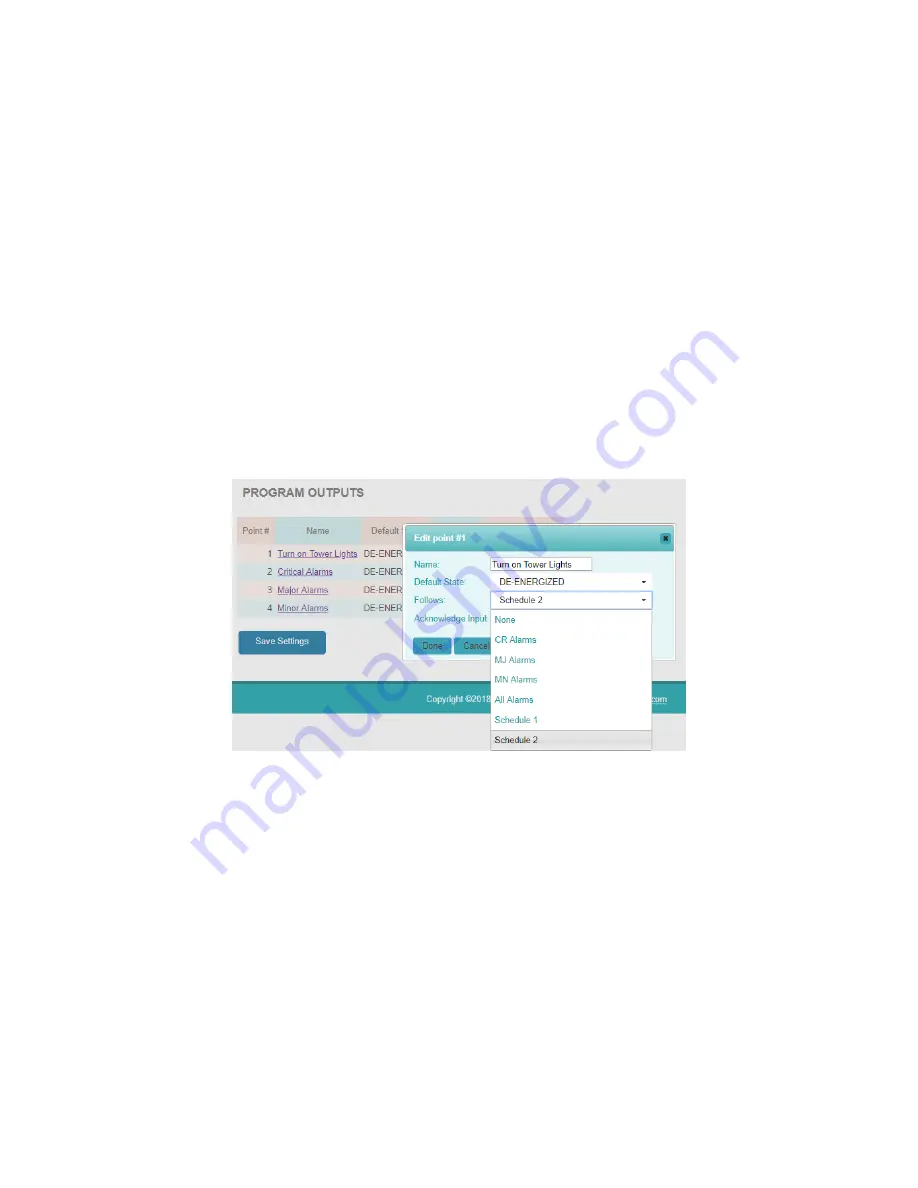
Rev 1. 1 05/08/19
- 34 -
TELSEC
©
MP2 User Guide
9.2.2
Default State
The default state is the condition of the relay when it is not being commanded to the active state. This
option allows for the relay coil to be either de-energized or energized as the default state of the relay.
Select whether the output should be De-energized when not activated (normal relay logic) or Energized
when not in the activated state (reverse relay logic).
9.2.3
Output Follows Option
Use the dropdown to select what function you want the relay to follow. This dropdown will show the
options of NONE meaning it will only be activated with a user bypass, Alarm severity options or defined
time schedules. Time schedules must be defined first for them to appear in the dropdown. By following
an alarm severity, the output will be in the activated (ON) condition when there is an active alarm with
the chosen severity. The output will stay activated until the there are no longer any active alarms with
the chosen severity or if the Acknowledge button on the web page is pressed. Additionally, an input can
be used as the acknowledge function as well. When either Acknowledge function is activated, the
system will de-active the output. The output will remain deactivated until another active alarm with the
corresponding severity occurs. See Figure 45 below.
Figure 45 - Program output window
9.2.4
Output Acknowledge Function
The program output window has the option to select a digital input as an acknowledge function. If the
output is activated due to an Active Alarm, then the output will de-activate when the acknowledge input
is in the ON condition. This is useful when using a local enunciator panel that has a momentary input to
acknowledge the alarm condition and turn off the output. For example, you may program an output to
control a warning light when there is a critical alarm active and program another relay controlling the
horn. Pressing the acknowledge button could silence the horn until the next alarm occurs.






























